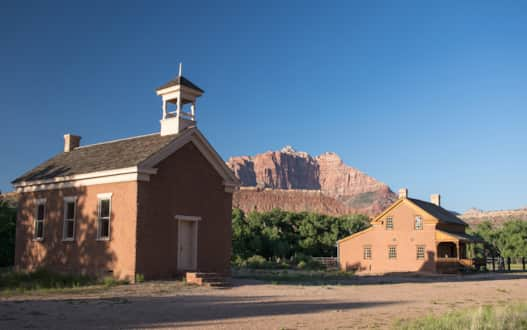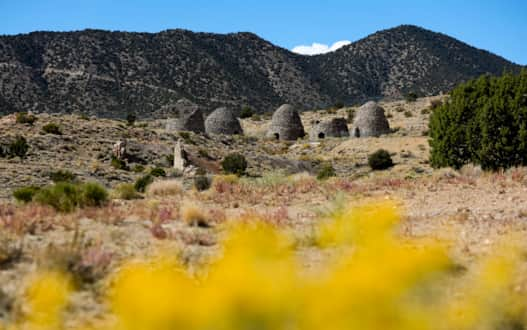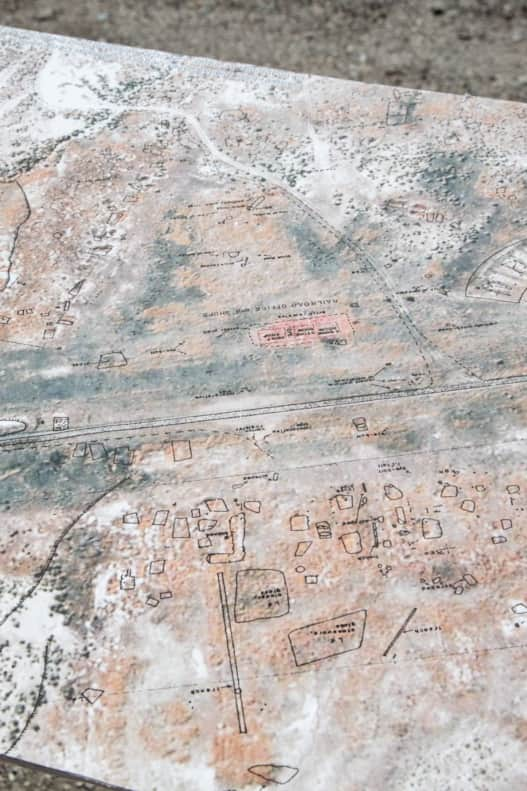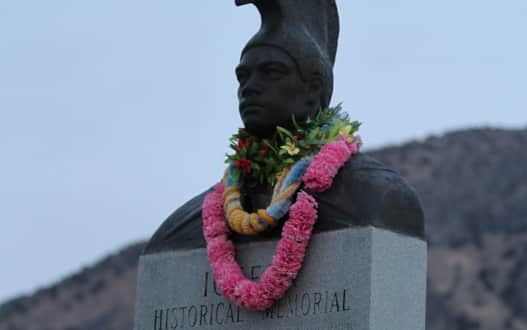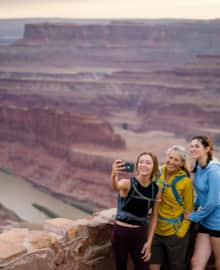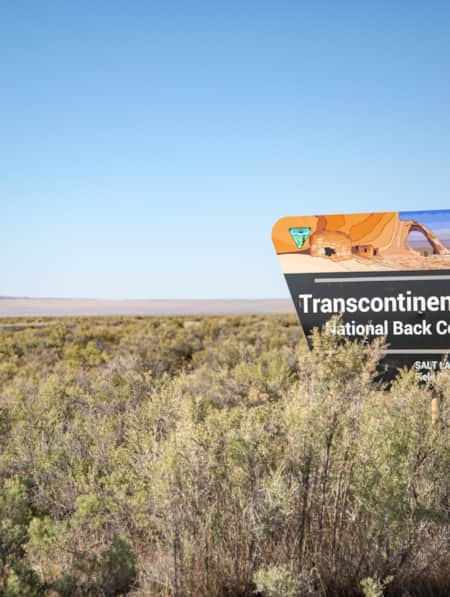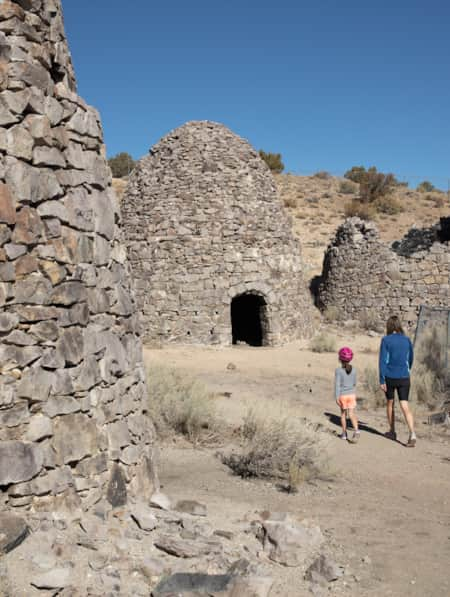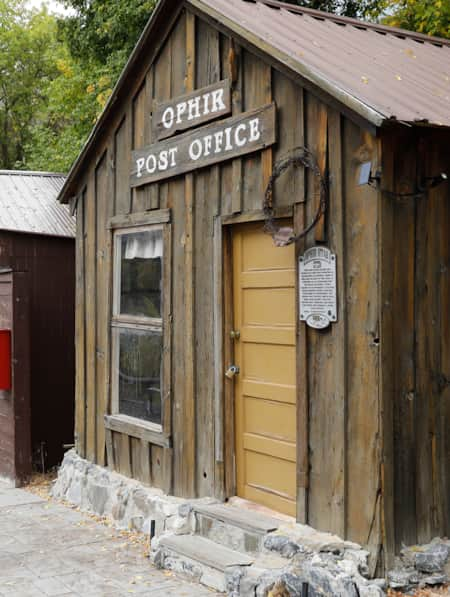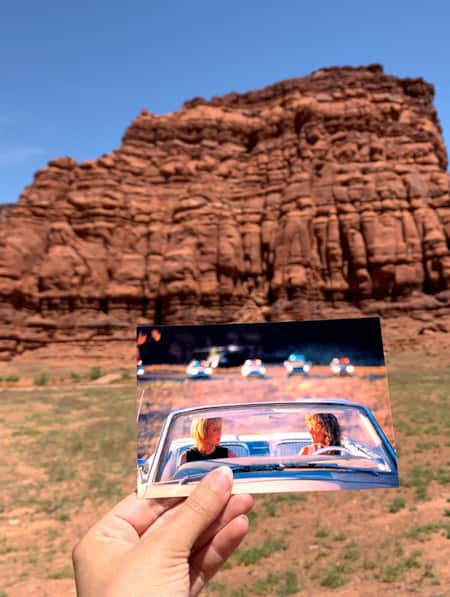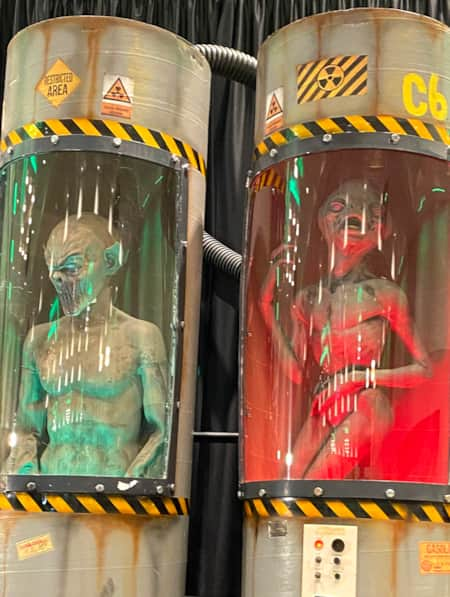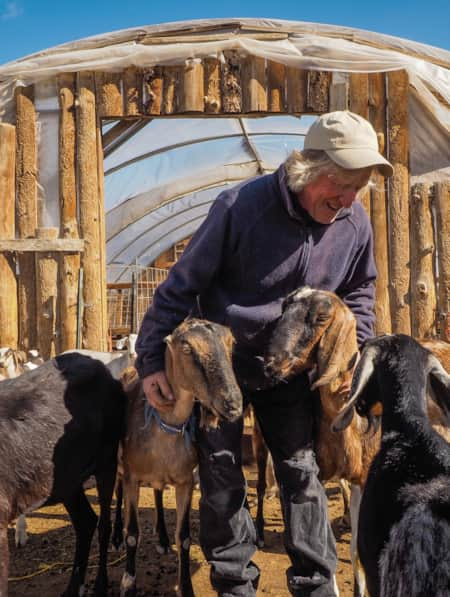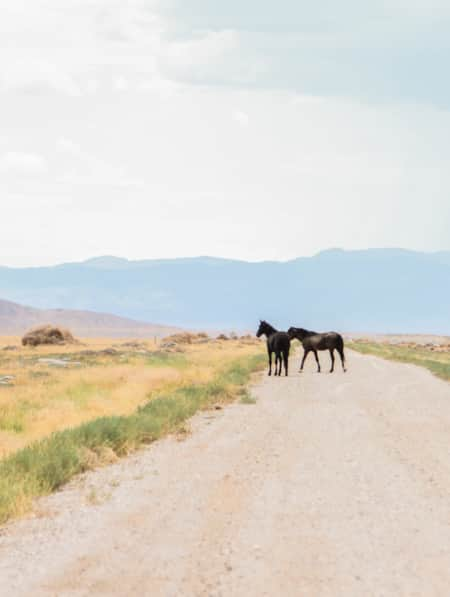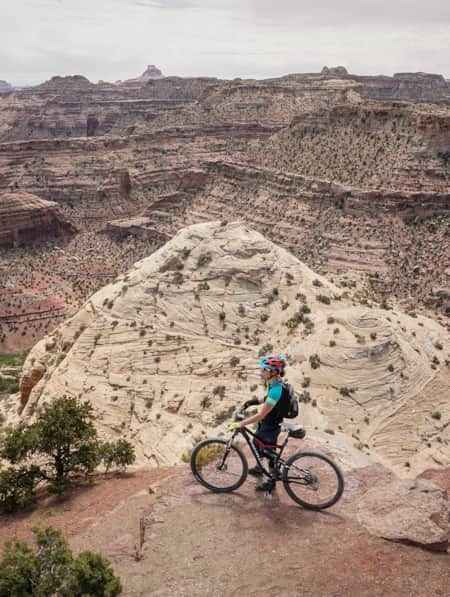Southern Utah Ghost Towns
Ghost towns like Old Irontown, Stateline and Sego existed in tough desert conditions. First timers should start with Grafton and Silver Reef.
Grafton
The ghost town of Grafton, located south of Zion National Park, was originally settled by Mormon pioneers, members of the Church of Jesus Christ of Latter-day Saints, who answered the calling of their prophet and church president Brigham Young to establish towns throughout Utah. It’s unique because it was established for less than a decade before settlers were forced out due to tensions with Native Americans. Only the graveyard and a renovated schoolhouse remain.
While you can’t go into the schoolhouse, it’s one of the most pristine abandoned buildings left in all of Utah’s ghost towns and makes for a great photo opportunity. Some say that Grafton is the most photographed ghost town in the West. It was even one of the filming locations for parts of "Butch Cassidy and the Sundance Kid," among other Hollywood movies.
Silver Reef
This fading ghost town is located north of St. George, close to Leeds. A mining town, Silver Reef was the first sandstone location to hold silver and was named for the lode of it that was discovered there. During the late 1870s and early 1880s, the height of the town’s silver boom, Silver Reef was the most populous place in southern Utah.
Today, little remains of the once-bustling mining town, but you can spot foundation remnants, the old Wells Fargo building and the graveyard (where many miners lay, purportedly the outcome of settling their disputes the Western way). A nearby building has some replicas and historical information about Silver Reef.
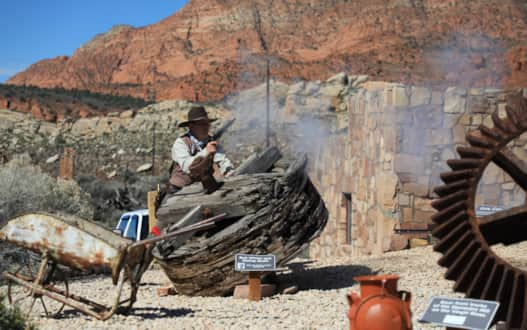
Silver Reef Museum and Ghost Town.
Photo: Greater Zion
Frisco
About 15 miles west of the small town of Milford, Utah, lie the remnants of a once wild — and wildly profitable — mining town called Frisco. Named for the nearby San Francisco Mountains, Frisco was notorious for crime and lawlessness in the late 19th century, drawing prospectors and fortune seekers with the promise of silver riches. While little of the original town is left after a major mine collapse in 1885, visitors can still wander among the historic cemetery and impressive stone kilns that once processed the ore, where the final stories of this wild frontier town are etched in stone.
"Every ghost town has a story to tell. They are often reminders of long forgotten dreams, hopes, struggles and gradual decline."
Northern Utah Ghost Towns
Utah's northern ghost towns dot the upper half of the state, including across the Great Basin Desert west of Salt Lake City and along the Carbon Corridor between Price and Moab.
Terrace
Terrace's fate was tied to the formation of the Transcontinental Railroad. At its peak, Terrace reached nearly 1,000 residents, many of whom were likely Chinese, excluded from the census. The railroad town and its population attracted a chain store, imported trees, library, opera house, pleasure garden, a couple of hotels, a school, a public bath and even a justice of the peace who, according to the shot-up interpretive signage at the site, also ran the saloon.
Terrace all but vanished after the shorter line was completed across Great Salt Lake. Travel to this area requires remote navigating on the Transcontinental Railroad Backcountry Byway (Read: A View from The Past).
Eureka
On state Route 6 from Salt Lake City to Delta, you’ll find the mining ghost town of Eureka. Founded in 1870 when gold and silver were discovered there, the population boomed in 1910 to nearly 4,000 inhabitants. Today, 600 folks still call Eureka home, and its historic buildings are on the National Register of Historic Places. Explore its mining heyday at the old jail and the Tintic Mining Museum.
Filmmakers later discovered Eureka also served as a perfect backdrop for storytelling. Remnants of the past still dot the landscape and the quaint main street, rolling hills, and sprawling desert have been featured in numerous films along the Utah Film Trail over the years, including "The Maldonado Miracle" (2003), "The World's Fastest Indian" (2005), "Nitro Circus: The Movie" (2012), and "Omaha" (2025).
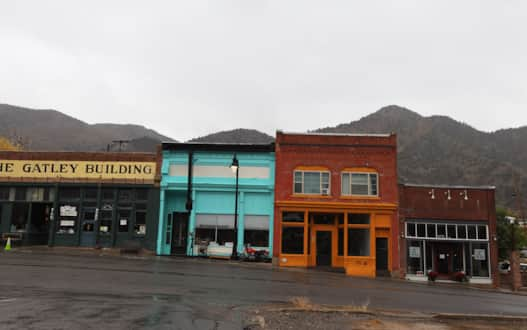
A once bustling mining town in the early 1900s, Eureka was considered one of the largest cities in Utah. Due to the Great Depression, Eureka dwindled into a semi-ghost town.
Photo: Rosie Serago
Thistle
Unlike many ghost towns in Utah, Thistle wasn't a mining hub nor was it abandoned due to its veins of ore being tapped out. It was designed as a railroad town in the late 1800s and served as a waypoint between Denver and points west. Thistle survived well into modern times until it was dealt its death blow in 1983 when a landslide triggered a massive flood that effectively washed away the entire town. To be fair, the town's population had peaked at 600 in 1917 and was reduced to less than 50 when the flood wiped out what was left — meaning it was well on its way to ghost town status even without the natural disaster.
Some structures still stand, imprisoned by silt. This includes water-ravaged homes and railroad archway entrances to buildings long since destroyed. There are even a few rusting cars within the remaining debris. Thistle is unique in that it is a town that fell into ruin in recent memory and was still functional — although barely — into the 80s.
Continue driving about an hour toward Helper and you can also find Latuda, a ghost town formed after the mine closed in 1967.
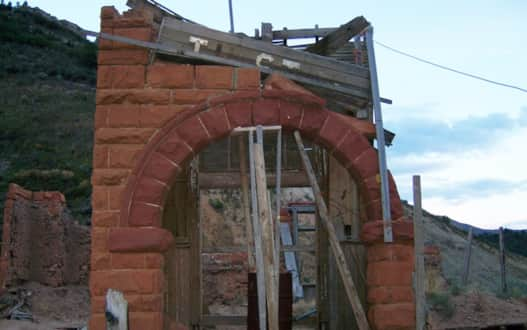
A landslide in 1983 triggered a massive flood that effectively washed away the entire town of Thistle. Some structures still stand, imprisoned by silt.
Photo: Jenny Bauman, Flickr
Iosepa
Not much remains of the old colony that existed here for nearly 50 years. Mormon missionaries traversed the Hawaiian Islands in the 1850s and 1860s, and church leaders decided to settle a community of about 100 converts in the desolate Skull Valley. A minor leprosy outbreak in 1896 gave Iosepa the distinction of having one of the few leper colonies on American soil.
You see the site of Iosepa a long time before reaching it, with the last remaining old shade trees clearly visible for several miles. The town site is a private ranch today, but you may still access the old cemetery, where there is an especially fine memorial and historical marker describing the settlement of the area. Drive about half a mile up the dirt road between two farmhouses (keep in mind you are on private property) and head toward the large pavilion visible from the road. Built by the Iosepa Historical Association, it is now the site of commemorative events every Memorial Day.
